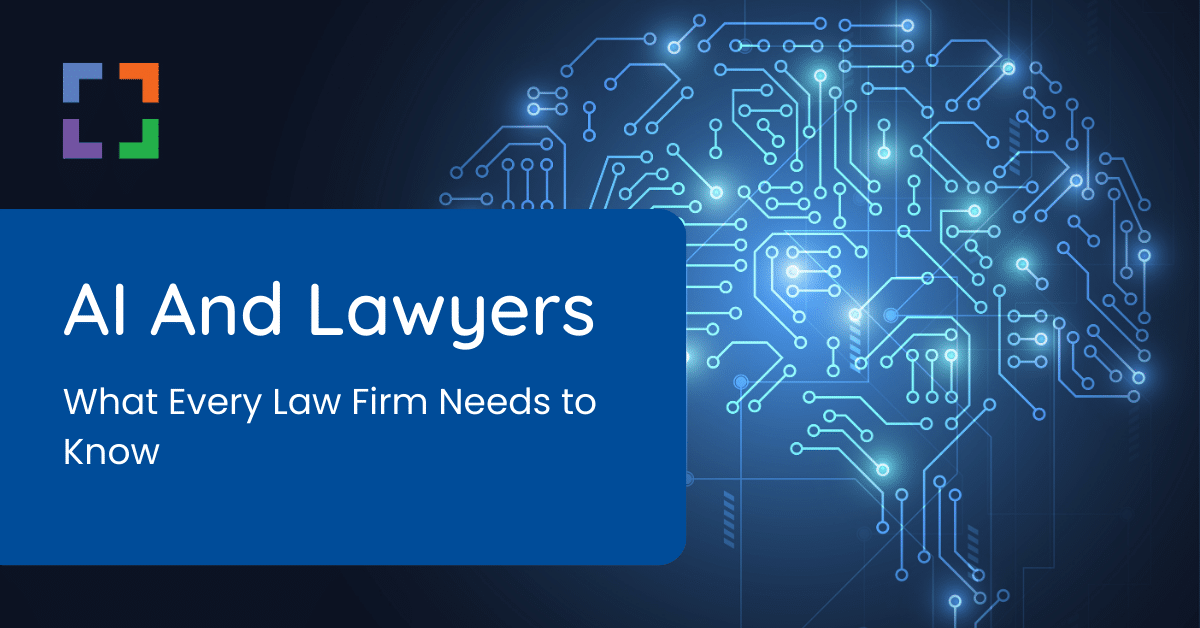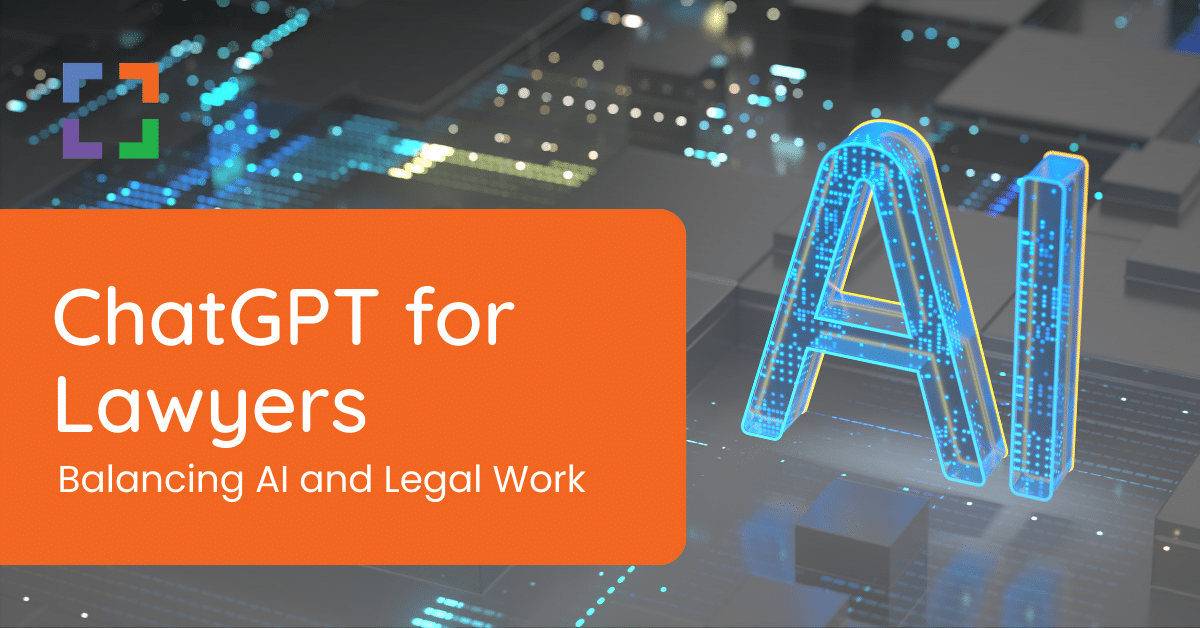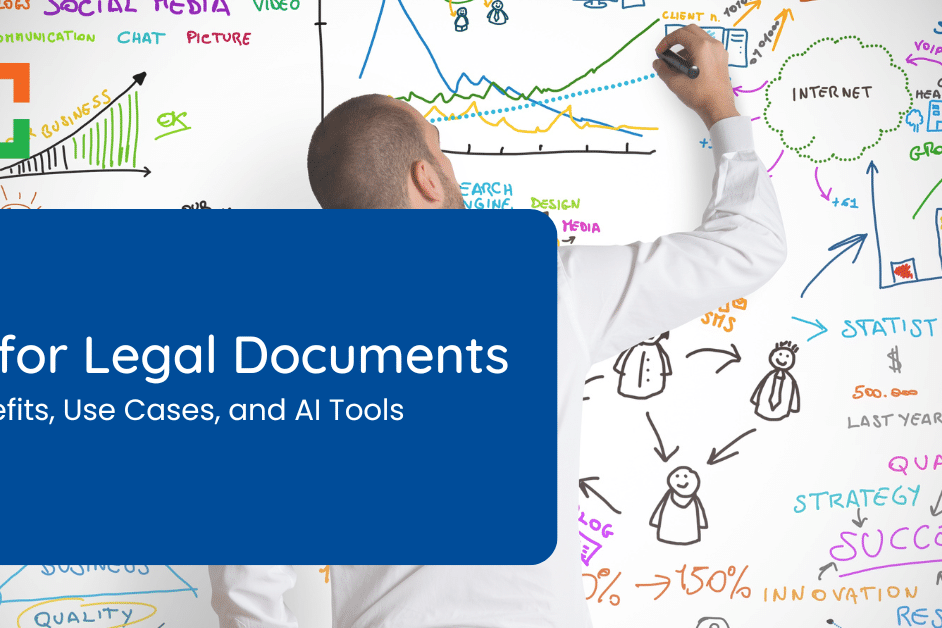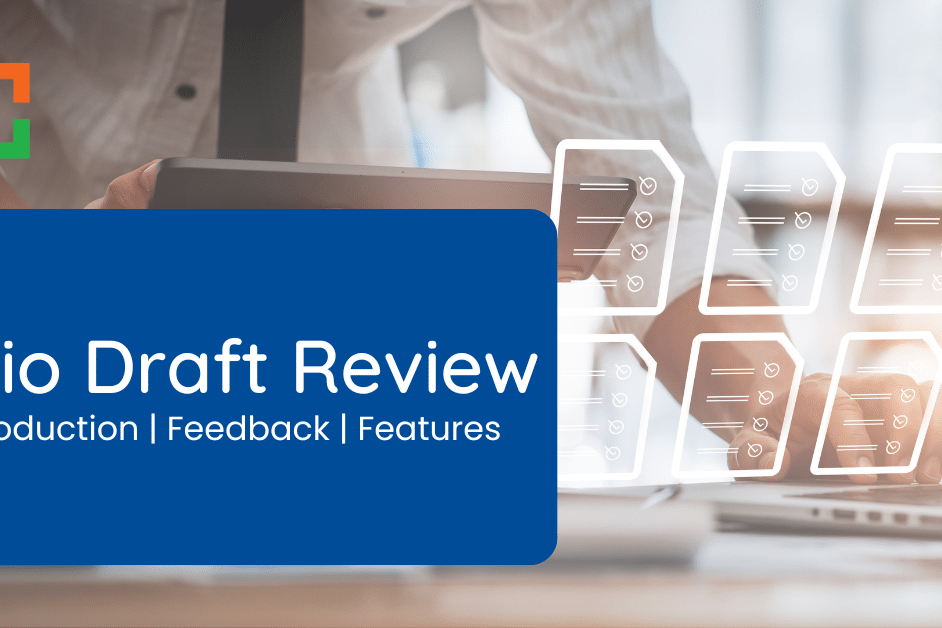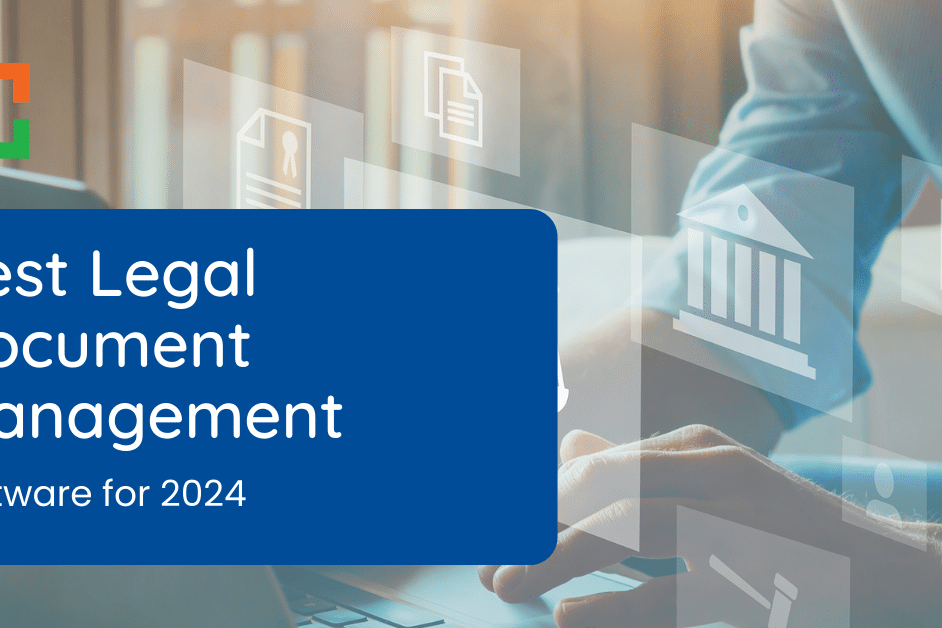What Every Law Firm Needs to Know About AI
There’s been a lot of headlines and buzz around AI in the past few months.
The current commentary ranges from practical discussions to esoteric and philosophical; and the business of law has certainly been part of the discussion. Put simply, there’s a lot of information out there about AI, the practice of law, applications, risks, benefits and the future… so for this article, I’m going to try to provide some practical, grounded information about AI for lawyers and what artificial intelligence, in all of its forms, means for law firms.
Let’s get started.
Why is AI front and Center Now?
AI, machine learning and related topics have been in and out of the headlines for years. There will be a bit of buzz around the subject, then the world will (seemingly) forget about AI for a while. And let’s be honest, technology isn’t without its occasional over-hyped “revolution” that… isn’t quite.
But, this is different.
Large Language Models like GPT-3 and GPT-4 (and the user-facing Chat-GPT) mark a significant milestone in the development and application of Artificial Intelligence. GPT-3 and 4, as the leading example, can review and produce information (text-based content) and can do so in a conversational, human-like way. AI tools such as these can assist with tasks like legal research, document drafting, or contract review by providing suggestions, summarizing information, or identifying relevant precedents.
In March 2023, GPT-4 passed the state bar exam with flying colors, and also passed the US Medical Licensing exam without clinician input.

These are just the most recent examples that underscore that the current iteration of AI is approaching a revolution.
AI and Lawyers – A Primer
First, let’s get some terminology and basic AI principles down.
Machine Learning
Machine learning is a branch of artificial intelligence that enables computers to learn and make decisions without being explicitly programmed. With machine learning, a computer system is fed large amounts of data, like images or text, and it learns to recognize patterns and make predictions based on that data. The more data it processes, the better it becomes at making accurate predictions or decisions. This technology powers many of the smart tools and applications we all use today, such as email spam filters, recommendation systems, and voice assistants.
Generative AI
Generative AI are tools that, as the name implies, generate content. The most notable of these are text-generation tools such as ChatGPT, and graphic/artistic generative tools like Midjourney. Both create shockingly high quality content (text and creative works, respectively) and at amazing speeds and very low costs.
Large Language Models (LLM’s)
LLM’s like GPT-3 and GPT-4 are advanced artificial intelligence (AI) systems designed to understand and generate human-like text. These models are trained on vast amounts of text data from diverse sources, such as books, articles, websites, and more, to learn the intricacies of language, grammar, and various subject matters.
Imagine the model as a highly skilled librarian who has read countless books and articles across numerous topics, including the law. This librarian can help answer questions, provide insights, and even draft documents by drawing on their extensive knowledge. These AI models are built using machine learning, and are bult to mimic the way human brains process information. By analyzing large amounts of text data, the model learns patterns and associations, enabling it to generate coherent, relevant responses.
For lawyers and legal professionals, large language models will become increasingly valuable tools. They can assist with things like legal research, document drafting, or contract review by providing suggestions, summarizing information, or identifying relevant precedents. However, it’s important to remember that these models are not infallible and, at least presently, should be used as a supplementary resource rather than a definitive authority. In other words, LLM’s definitely get the facts wrong sometimes.
ANI and AGI
AI, in some forms, has actually been around and in use real-world for a while now. Specifically, Artificial Narrow Intelligence, or ANI. ANI is AI that is very, very good at exactly one thing. Things like credit card fraud detection to deciding what video to show you on your YouTube feed–ANI is powered by machine learning and very narrow in focus.
Artificial General Intelligence is, more or less, what you think of when you picture AI in science fiction: a superintelligence that knows, effectively, everything about everything (or many things across a wide variety of subjects and domains). We haven’t yet created AGI, though some experts believe we’re close. Generative AI tools like GPT-4, by some accounts, live somewhere between ANI and AGI.

The Players – Who’s Leading AI
Broadly speaking, there are a short list of companies that are actively leading the development of AI (which some experts have called the “AI arms race”).
OpenAI is the company behind GPT and ChatGPT. They have other AI projects, but GPT is the most well know, and arguably is the model that got us all talking about AI. OpenAI is privately held and based in Silicon Valley, though Microsoft just aquired a 49% stake in OpenAI with its investment of $10 Billion.
Microsoft, now a major shareholder of OpenAI, is the de facto leader in the AI race. Microsoft has already started to build the GPT engine into Bing search, Microsoft 365 via its new Copilot tool, and GitHub Copilot, all of which now offer ChatGPT-like functionality to assist in creation of documents, programming code and more.
Google has long been working on AI, including within its self-driving car business. Recently, likely feeling the competitive pressure, Google has released its own generative AI chatbot called Bard. Bard works similar to ChatGPT in that it responds to prompts and provides textual information and responses. While Google seems to be in second place in the AI race, they have the infrastructure and engineers to give OpenAI and Microsoft a run for their money.
Meta, it seems, has quietly pivoted away from its vision for the metaverse and virtual reality, and shifted its attention to developing its own AI as well.
Practical Uses and Tools (Right Now)
It’s important to acknowledge that current levels of AI aren’t just bespoke chatbots or other esoteric tools. There are many AI tools available and in use right now, both stand-alone apps and AI tools being baked into traditional productivity software.
ChatGPT
ChatGPT, again, is the leading LLM by OpenAI. ChatGPT is available for free in “research mode” (think: beta), as well as a Premium edition that uses the latest GPT-4 model. ChatGPT can be thought of as a Swiss army knife of text generation, almost a personal assistant. Uses of ChatGPT are wide, but some examples include:
- Answering general questions: Providing information on a wide range of topics, such as history, science, technology, and more.
- Drafting and editing content: Assisting with the creation of blog posts, articles, social media updates, or other written material.
- Summarizing information: Helping users distill lengthy texts, articles, or documents into concise summaries.
- Brainstorming ideas: Generating creative suggestions or concepts for projects, marketing campaigns, or problem-solving.
- Assisting with learning: Offering explanations or insights on various subjects to help users learn and understand new concepts.
- Scheduling and reminders: Helping users manage their schedules and remember important events or tasks.
- Recommending resources: Suggesting books, articles, or other materials related to a user’s interests or research needs.
- Simulating characters: Creating fictional characters or dialogues for storytelling, screenwriting, or role-playing purposes.
Related – ChatGPT for Lawyers: Learn how you can utilize ChatGPT for your law firm. Increased productivity and take some time back.
Microsoft 365 Copilot
Described as “Your copilot for work,” Microsoft 365 Copilot came from Microsoft’s investment in and partnership with OpenAI. 365 Copilot bakes ChatGPT-like functionality into the Microsoft 365 (AKA Office 365) suite. 365 Copilot can:
- Help you author content in Microsoft Word.
- Help you draft emails (write, summarize, condense, expand) in Outlook.
- Help you compose messages in Teams.
- Help you analyze data in Excel.
Tools like 365 Copilot bill themselves as helping you be “a better version of you,” insofar as they can help you brainstorm, speed up routine tasks and ultimately “3X” or “10X” your own output. I think this characterization of these kinds of tools is probably mostly accurate. Those legal professionals that quickly learn how to leverage AI tools will be able to produce and accomplish significantly more than those who don’t.

Jasper
Jasper is a generative AI tool, similar to ChatGPT, that helps you create written content. Jasper has been used for a while now, and generally is very good at creating (or assisting in creation of):
- Blogs and articles
- Marketing copy and advertisements
- Press releases
- Sales emails
Tools like Jasper can dramatically speed up the content production process, ranging from marketing materials to even legal drafting. It is important, however, to treat generative AI tools like Jasper as a supplementary tool and not a substitute for human expertise, as the final review and validation of legal documents should always remain in the hands of skilled lawyers.
More
There are many more AI-based tools already today, ranging from fun “toys” to sophisticated tools with a lot of business application.
AI and Lawyers: The Near-Term
The legal tech industry is experiencing rapid innovation as companies build and integrate AI and large language model (LLM) technologies into their products. This development is in the early stages, but will undoubtably change the way legal professionals work, offering tools that can streamline processes, improve efficiency, and help deliver better outcomes for clients.
One example of this trend is Ironclad, which recently released its AI redlining tool AI Assist. This new application, powered by the GPT-4 model, is the first contract redlining tool to utilize generative AI. AI Assist enables legal professionals to quickly and accurately review, compare, and revise contract drafts by leveraging the power of AI to identify discrepancies, suggest edits, and ensure compliance with relevant laws and regulations.
This, and other examples, demonstrate the transformative potential of artificial intelligence in the legal sector. By automating time-consuming and repetitive tasks, these tools allow legal professionals to focus on higher-level tasks that require their unique expertise and judgment. As AI technology continues to advance and mature, we’ll certainly see even more powerful applications emerge in the legal tech space, helping to reshape the industry and the way legal services are delivered.

AI and Lawyers: The Long-Term
So how will AI affect the practice and business of law in the long-term?
In a recent analysis by Goldman Sachs, around 44% of legal work could be relatively easily automated by AI, particularly LLMs like ChatGPT. This makes sense, since such a small percentage of a lawyer’s time is spent litigating, and more is spent analyzing documents, drafting documents and performing legal research.
Still, there are optimists in the legal tech community (myself included). In the past, people feared that robotic automation would replace factory worker jobs in, for instance, in automobile manufacturing assembly lines. By and large, it didn’t, rather automation increased the output that each human employee could produce.
Similarly, AI could very well “10X” the productivity and output of every legal professional, from lawyers to legal support staff. This means that more law firms can help more people; it also means that AI is likely to reduce legal costs on a per-customer basis, and might even help with larger issues like access to justice.
The Verdict
In the coming years, I believe it’s a strategic imperative that every law firm, large and small, have an AI strategy. This starts with becoming and staying abreast of the current state of AI, which changes almost weekly. Then, as tools and technologies emerge, lawyers should assess them to determine which technologies will truly add value to their practice.
Firms that embrace and adopt AI tools will not only shoot ahead of their competitors, they’ll deliver demonstrably better service and better outcomes for their clients.
You Might Also Like
April 12, 2024
AI for Legal Documents: Benefits, Use Cases, and AI Tools
Discover how AI is changing legal…
April 10, 2024
Protected: Clio Draft Review
Want More Legal Technology Tips?
Subscribe to Uptime Legal to get the latest legal tech tips and trends, delivered to your inbox weekly.
